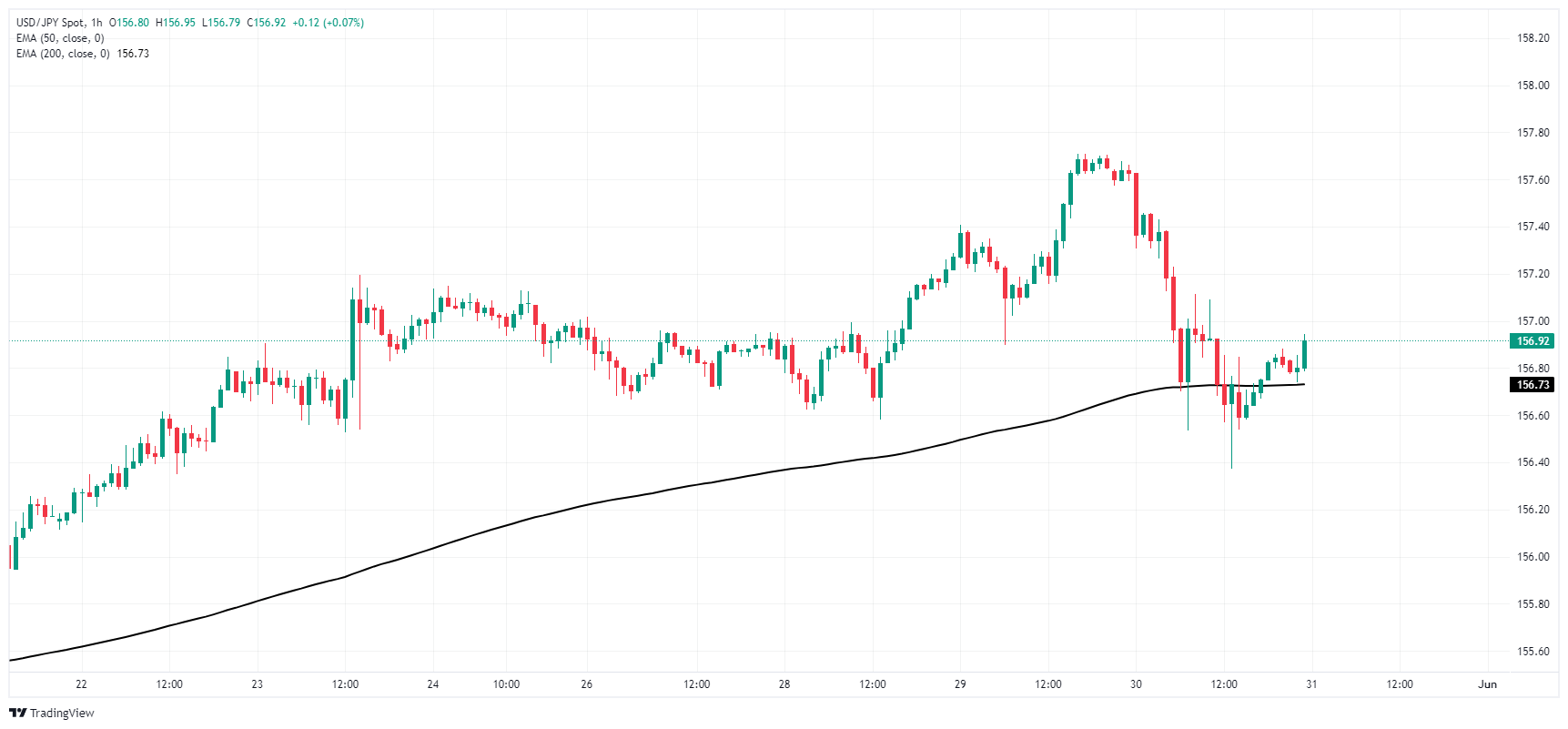Japan's Tokyo Consumer Price Index (CPI) inflation rose to 2.2% YoY in May, climbing from the previous 1.8%. May's CPI inflation in Tokyo rebounded from April's 1.8%, a 26-month low.
Tokyo CPI inflation trends higher than national-level CPI inflation figures, which tend to be released three weeks after the Tokyo inflation, which serves as a preview of Japanese inflation trends. The Bank of Japan (BoJ) has been deeply entrenched in a monetary policy stance, and fear of declining inflation has kept the BoJ from raising rates and trimming the wide rate differential that exists between the Japanese Yen (JPY) and other major global currencies.
Economic Indicator
Tokyo Consumer Price Index (YoY)
The Tokyo Consumer Price Index (CPI), released by the Statistics Bureau of Japan on a monthly basis, measures the price fluctuation of goods and services purchased by households in the Tokyo region. The index is widely considered as a leading indicator of Japan’s overall CPI as it is published weeks before the nationwide reading. The YoY reading compares prices in the reference month to the same month a year earlier. Generally, a high reading is seen as bullish for the Japanese Yen (JPY), while a low reading is seen as bearish.
Read more.Last release: Thu May 30, 2024 23:30
Frequency: Monthly
Actual: 2.2%
Consensus: -
Previous: 1.8%
Source: Statistics Bureau of Japan
Recovering CPI inflation could provide confidence in future policy adjustment expectations from the BoJ.
Core Tokyo CPI inflation also rose to 1.9% from 1.6% Yoy, while 'core-core' Tokyo CPI inflation (headline CPI inflation less volatile food and energy prices) also rose 2.2% on an annual basis from 1.8%.
Market reaction
USD/JPY is trading on the high side in the early Friday Pacific market session, testing near the 157.00 handle after slipping to an intraday low of 156.37.
USD/JPY hourly chart
About Tokyo CPI inflation
The Tokyo Consumer Price Index (CPI), released by the Statistics Bureau of Japan on a monthly basis, measures the price fluctuation of goods and services purchased by households in the Tokyo region. The index is widely considered as a leading indicator of Japan’s overall CPI as it is published weeks before the nationwide reading. The YoY reading compares prices in the reference month to the same month a year earlier. Generally, a high reading is seen as bullish for the Japanese Yen (JPY), while a low reading is seen as bearish.
Information on these pages contains forward-looking statements that involve risks and uncertainties. Markets and instruments profiled on this page are for informational purposes only and should not in any way come across as a recommendation to buy or sell in these assets. You should do your own thorough research before making any investment decisions. FXStreet does not in any way guarantee that this information is free from mistakes, errors, or material misstatements. It also does not guarantee that this information is of a timely nature. Investing in Open Markets involves a great deal of risk, including the loss of all or a portion of your investment, as well as emotional distress. All risks, losses and costs associated with investing, including total loss of principal, are your responsibility. The views and opinions expressed in this article are those of the authors and do not necessarily reflect the official policy or position of FXStreet nor its advertisers. The author will not be held responsible for information that is found at the end of links posted on this page.
If not otherwise explicitly mentioned in the body of the article, at the time of writing, the author has no position in any stock mentioned in this article and no business relationship with any company mentioned. The author has not received compensation for writing this article, other than from FXStreet.
FXStreet and the author do not provide personalized recommendations. The author makes no representations as to the accuracy, completeness, or suitability of this information. FXStreet and the author will not be liable for any errors, omissions or any losses, injuries or damages arising from this information and its display or use. Errors and omissions excepted.
The author and FXStreet are not registered investment advisors and nothing in this article is intended to be investment advice.
Recommended content
Editors’ Picks

EUR/USD trades with sizeable gains above 1.1500, at over three-year highs
EUR/USD trades over 1% higher so far this Monday as the relentless selling interest in the US Dollar keeps it well above the 1.1500 threshold - the highest level since November 2021. Growing concerns over a US economic recession and the Federal Reserve’s autonomy continue to exert downward pressure on the USD.

Gold stands tall on concerns over trade war, Fed’s independence
Gold price closes on $3,400 as the record rally regains strength on Easter Monday. Concerns over US-China trade war escalation and the Fed’s independence smash the US Dollar to three-year troughs. RSI stays overbought on the daily chart, with thin volumes likely to exaggerate moves in Gold price.

GBP/USD stays strongly bid near 1.3400 on intense US Dollar weakness
GBP/USD continues its winning streak that began on April 8, trading close to 1.3400 in early Europe on Monday. The extended US Dollar weakness, amid US-Sino trade war-led recession fears and heightened threat to the Fed's independence, continue to underpin the pair. Thin trading is set to extend.

Bitcoin finally breaks out, Ethereum and Ripple could follow
Bitcoin's price broke above its key resistance level after facing multiple rejections around it the previous week. Ethereum and Ripple prices are approaching their key resistance levels; a breakout could signal a rally ahead.

Future-proofing portfolios: A playbook for tariff and recession risks
It does seem like we will be talking tariffs for a while. And if tariffs stay — in some shape or form — even after negotiations, we’ll likely be talking about recession too. Higher input costs, persistent inflation, and tighter monetary policy are already weighing on global growth.

The Best brokers to trade EUR/USD
SPONSORED Discover the top brokers for trading EUR/USD in 2025. Our list features brokers with competitive spreads, fast execution, and powerful platforms. Whether you're a beginner or an expert, find the right partner to navigate the dynamic Forex market.



